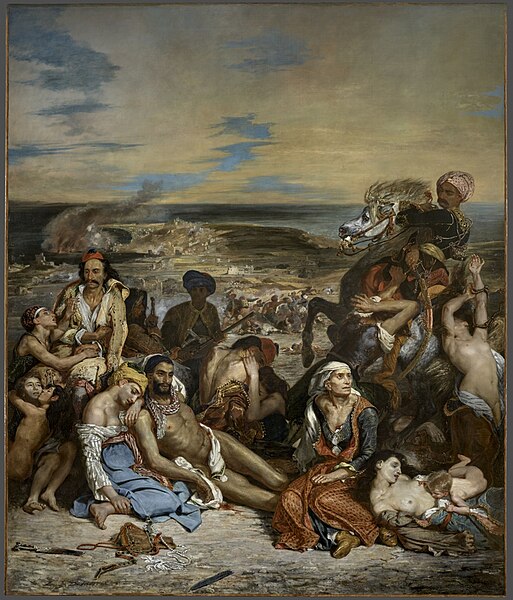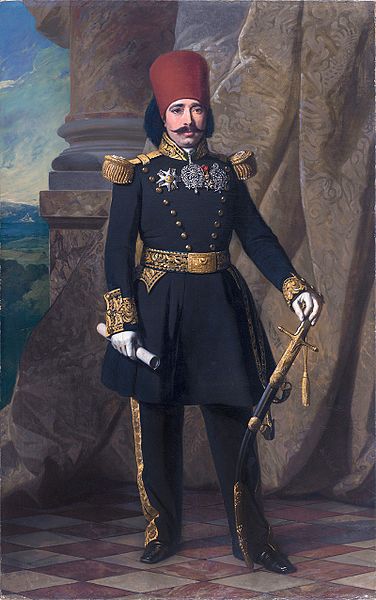The Chios massacre was a catastrophe that resulted in the death, enslavement, and flight of about four-fifths of the total population of Greeks on the island of Chios by Ottoman troops, during the Greek War of Independence in 1822. It is estimated that up to 100,000 people were killed or enslaved during the massacre, while up to 20,000 escaped as refugees. Greeks from neighboring islands had arrived on Chios and encouraged the Chiotes to join their revolt. In response, Ottoman troops landed on the island and killed thousands. The massacre of Christians provoked international outrage across the Western world, and led to increasing support for the Greek cause worldwide.
The Massacre at Chios (1824) by Eugène Delacroix
Ottoman admiral Nasuhzade Ali Pasha, who led the Chios massacre.
Human skeletal remains of the massacre in Nea Moni of Chios.
Georgios Stravelakis, a survivor at the age of five of the massacre, was sold into slavery. He eventually became Prime Minister of Tunis, from 1837 to 1873.
Chios is the fifth largest Greek island, situated in the northern Aegean Sea, and the tenth largest island in the Mediterranean Sea. The island is separated from Turkey by the Chios Strait. Chios is notable for its exports of mastic gum and its nickname is "the Mastic Island". Tourist attractions include its medieval villages and the 11th-century monastery of Nea Moni, a UNESCO World Heritage Site.
Chios
Buildings in Pyrgi covered with sgraffito (local name: Xistà)
View of the village of Mesta
Chios Municipal Park, with a statue of Konstantinos Kanaris








